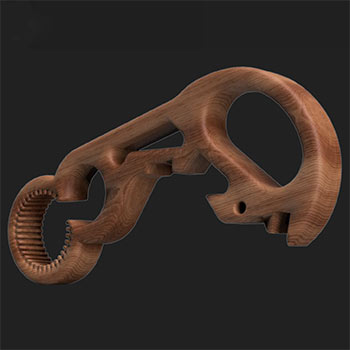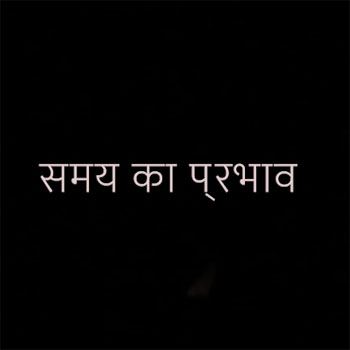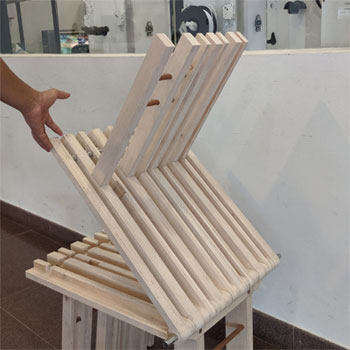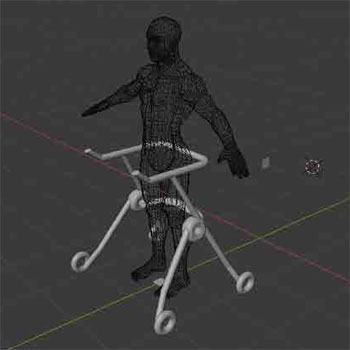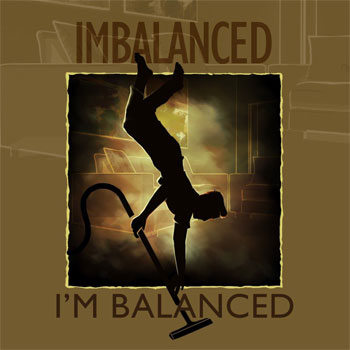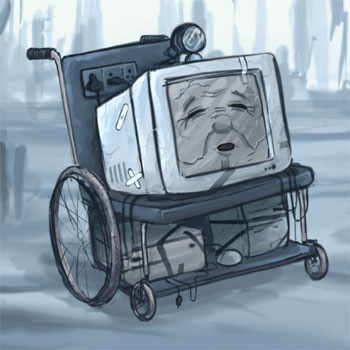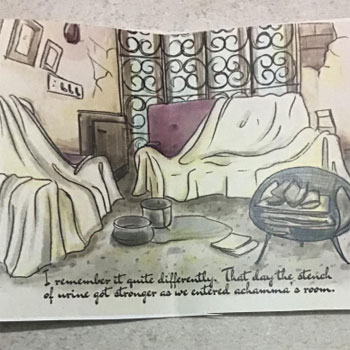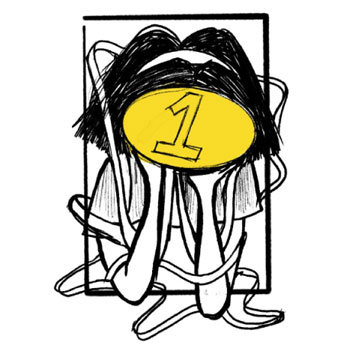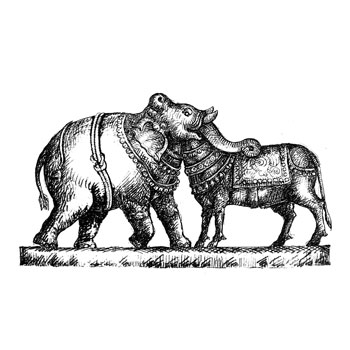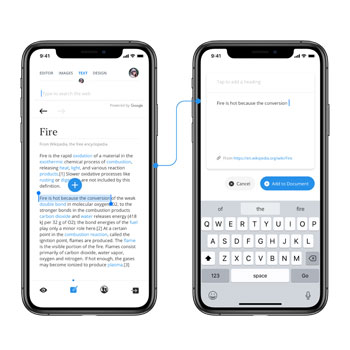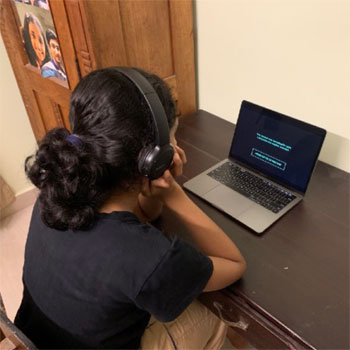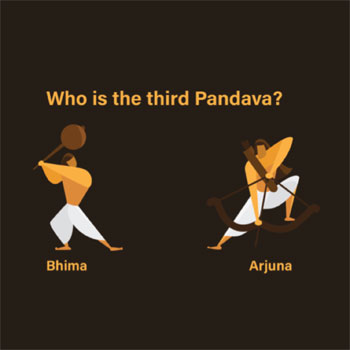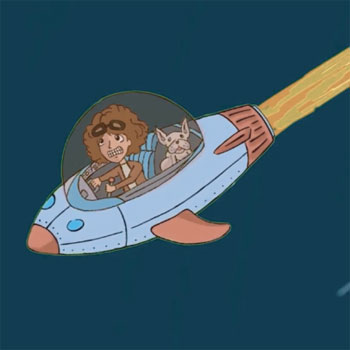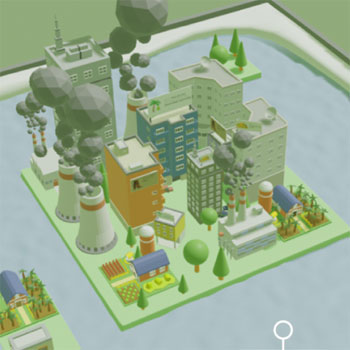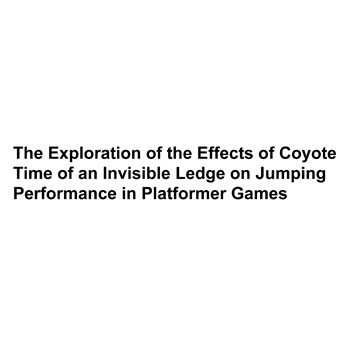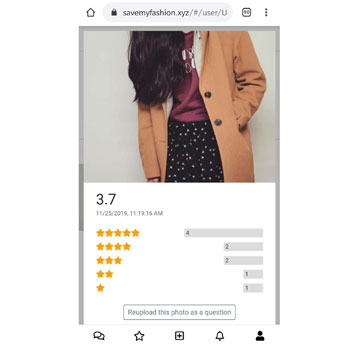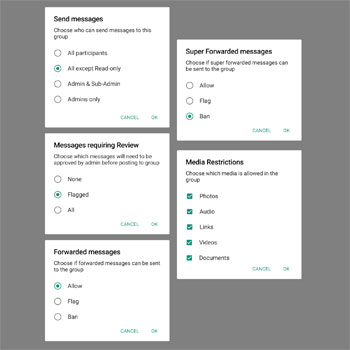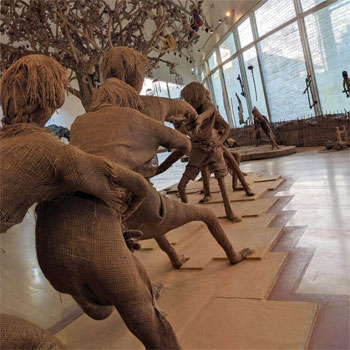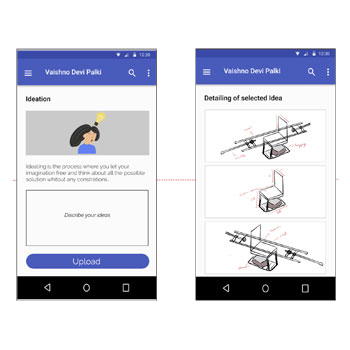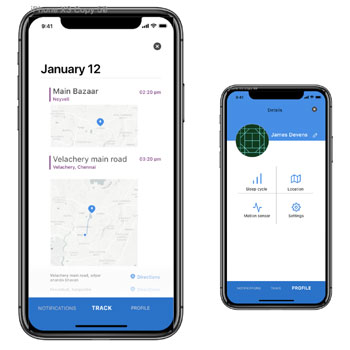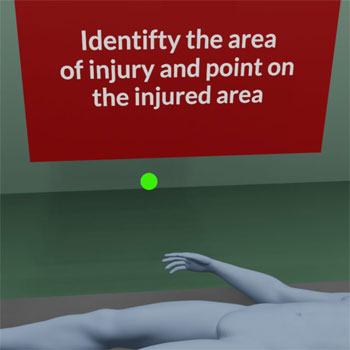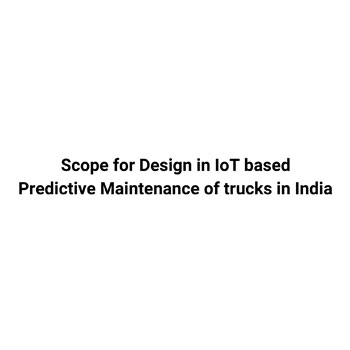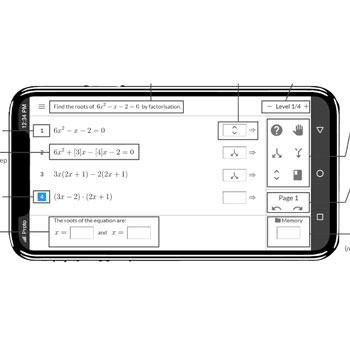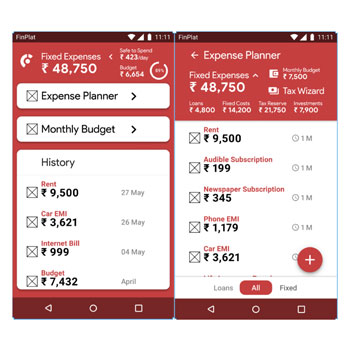B.Des
Batch 2016-2020
(41 items)
B.DesBatch 2016-2020
(41 items)
(41 items)
Bottle Opener
by Rashi Gupta
by Rashi Gupta
A bottle opener is the device that enables the removal of metal bottle caps (crown caps) from glass bottles. More generally, it might include corkscrews used to remove cork or plastic stoppers from wine bottles or can openers. The brief was to create a universal opener, thus the product is to be used single-handedly. Additional features like can opener and water bottle openers were added to make it more functional.
Details >>Accessibility solution for wheelchair users for the bus transit system in Israel
by Tarun Mugunthan
by Tarun Mugunthan
The project was done as part of a course I did at Holon Institute of Technology(HIT, Israel). It was a group project where my role was to design the solution which would be followed up with prototyping/deployment by the rest of my team mates who were engineering students. The duration of the project was 2 months with weekly progress meetings in between. The brief given to us was broad; to give a proposition to improve quality of life of citizens of Tel Aviv in a defined context and provide a completely detailed out solution with a prototype. We had freedom to choose any context we wished to work with. Through brainstorming, we came up with several ideas out of which we picked the idea of improving wheelchair user experience and accessibility of the public bus transit system in Israel.
Details >>Samay ka prabhav
by Abhishek Chandra
by Abhishek Chandra
“Samay ka prabhav” is a visual communication project by Abhishek Chandra (Batch 2016–2020, IDC, IIT Bombay). Positioned in the domain of visual storytelling, the project uses the medium of video (mp4) to explore the effect of time (“samay”) and its influence on people, contexts, or perceptions. Through moving imagery, the work investigates how time’s passage shapes identities, narratives, and transformations—seeking to give form to the invisible, subtle, and shifting forces that time exerts on life and memory.
Details >>Designing a Chair to show contrast between eastern and western culture
by Abhishek Chandra
by Abhishek Chandra
Traditionally, in Asian culture, people prefer to sit on the floor. Even in modern days, we have a habit of sitting cross-legged, fold-legged on the floor, bed, any flat surface, even on a chair. In western culture, people are used to sitting on a high, raised platform like a chair or bench stool. The concept of a chair, in itself, is a western thing from the history of the chair.
Details >>A Walker for elderly people in India
by Abhishek Chandra
by Abhishek Chandra
This photo was captured on a bus in Singapore; I think it admirably describes a perspective of the city very well. My experience of living in a developed country has taught me the possibilities of improvement in our daily lives and the lives of elderly people. If we look at the most aged countries in the world and how they have handled the issues, especially walking-related problems, there are some very interesting interventions. There are specialised assistive devices for specific age groups and situations. By looking at these interesting products, naturally, I get into thought about implementing the same in my own country. But, even if I can, this would not make any sense without the context. Because those are two different situations, cultures mean different sets of problems. India's population is growing at an unprecedented level, and so is the elderly. Increasing longevity and falling fertility have dramatically increased the numbers even more. According to the Population Census 2011, there are nearly 104 million elderly persons (aged 60 years or older) in India. And it is expected to grow to 173 million by 2026, by another report released by the United Nations Population Fund and HelpAge India. This situation becomes a problem when you see the on-growing elderly abuse the country. After retirement, many elderly people are forced to live a life of humiliation, abuse, and isolation.
Details >>An Informative Summary- Timing for Animation
by Akanksha Murmure
by Akanksha Murmure
As animation is time-consuming and requires immense efforts, it is uneconomic to edit out motions later. The behaviour of an object and the effect of weight seen on the screen relies exclusively on the spacing between the drawings and not the drawing itself. Therefore, the director is required to perfectly plan and time the animation and not depend on the quality of the drawings in their static sense. For good'readability’ of animation, there should be enough time for preparing the audience for an action rather than the time of the action itself. When creating moods like frantic chase or melodious romance, one needs to remember that all the timing calculations must be based on a constant frame rate. One can draw a circle; the audience will understand whether it is a cannon ball or a soap bubble only when the timing for its animation says so. In animation, a movement is a set of drawings that have neither weight nor any forces acting on them; hence, it necessitates the backing of Newton’s Laws of Motion. An animation’s success is defined by how well the animator answers the fundamental question: What will happen to this object when a force acts upon it? Cartoons as a medium exist by means of caricature, where proportions and motions are exaggerated. Therefore, a cartoon character is not expected to behave exactly like a human.
Details >>I’m Balanced- A short graphic novel
by Akanksha Murmure
by Akanksha Murmure
Over the decades as society evolved, certain family systems stayed the same throughout. In India, considered a third-world nation, this is more true than the western parts of the world. Most parts of India have been following a men-forward system. The men being the breadwinners of the house and their wives the homemakers and carers of their children is a structure seen in almost every married household. Even though Indian society is complex and diverse across states and communities, certain gender biases and stereotypes have been found in every state. Gender segregation starts in the school, where boys and girls are differently taught and asked to take up particular subjects. “More than a third of Indian women (both urban and rural) primarily engaged in housework report wanting to work for pay if a job were available.” The burden of leaving their private sphere to reinforce the monetary needs has always been bestowed upon the men, leading to their absence in fatherly life. The gender stereotype that women should be the primary carers is carved into the fundamental structure of people’s everyday lives. makes the fathers mainly the discipline givers. and this bias is carved into the fundamental structure of people’s everyday lives.
Details >>An animated short video on The Evolution of Communication devices
by Akanksha Murmure
by Akanksha Murmure
Communication, meaning ‘to share’ is an important need for mankind. As Aristotle said, “Man is by nature a social animal.” It has become a basic need to bring about relationships with fellow men, share, and build about a society. It's said better and direct communication is the key to better relationships. Starting from phones and other gadgets, the internet, and social media, to face-to-face communication and to the basic body language, we use a huge number of things to communicate. But did we know that the evolution of communication ranges back to cave paintings? And isn't it limited to the technologies we use?
Details >>Understanding wise-en-scene as a tool for visual storytelling in malayalam cinema for the past decade (2010-2020)
by Aarcha Suresh
by Aarcha Suresh
Malayalam cinema has undergone what is now known as a new wave after 2010. The end of the 20th century Malayalam film industry witnessed majorly non-adultery content, like coming-of-age romance (Niram-1999), unemployment (Nadodikkattu-1987, Ramji Rao Speaking-1989), political satire (Sandesham-1991, Varavelpu-1989), etc., keeping in mind the large family audience. In the following decade (2000–2010), the popularity of the films depended heavily on the star value of the cast. In the years that followed, numerous films were stripped of their cinematic glamour. Traffic (2011), directed by Rajesh Pillai, is one of the initial movies that marked the beginning of the New Wave in Malayalam cinema. The non linear narrative of a real-life incident that happened in Chennai was critically acclaimed and celebrated. A lot of new directors came forward with fresh perspectives and styles of filmmaking. In this paper, I attempted to understand the visual storytelling in the light of mise en scène, reading one movie each from the different genres and styles I could identify in the said period. Why mise en scene? There are multiple techniques to analyse movies. As an illustrator, I am more interested in understanding how the setting, colours, lighting, composition, style of costumes, frames, camera angles, and POVs could contribute to the visual story telling. The objective is to employ the observations of the study in my future projects and thereby become a more informed illustrator and storyteller.
Details >>Comic Series on Insidious Parenting Beliefs and Practices
by Aarcha Suresh
by Aarcha Suresh
This visual communication project by Aarcha Suresh (Batch 2016–2020, IDC, IIT Bombay) explores the subtle, often unspoken, beliefs surrounding parenting through a comic-based narrative medium. The project utilizes personal memories, cultural stories, and metaphorical parallels to illustrate the gradual internalization of parenting ideas. The ideation process involves selecting narratives from old journals and sketchbooks, finding linking metaphors, and experimenting with paper folds and spatial storytelling as part of the narrative itself.
Details >>Illustrated stories from my childhood
by Aarcha Suresh
by Aarcha Suresh
In a country like India where family values and cultural beliefs are held high, at a time when questioning the years old traditions in any way brings out violent riots, I find it important to talk about certain toxic, unhealthy traits of parenting that are widely normalised. I can only assume the immense challenges and difficulties that accompany the excitement of birthing and nurturing a human being. Especially when the world around is so rapidly changing, keeping up with the unfamiliar environment to bridge the gap between having grown up as a human being and having to cater to the growth of another human being must be extremely daring. Indian mythology has taught us to consider parents to be godlike. But in the whole act of trying to teach values of respect towards our nurturers, the very fact that they are also fellow humans who are entitled to make mistakes and learn from them as they pave their way through parenting is often forgotten to emphasise. Painting unrealistic, godly pictures of an ideal parent who cannot and does not go wrong is equally unhealthy and stressful.
Details >>Understanding Virtual reality
by Arnesh Mandal
by Arnesh Mandal
This research project is about understanding how to design for virtual reality and hence understand virtual reality. This project is exploratory in nature. VR is not a new medium, but its popularity and accessibility are new. Like all new media, we have a new set of constraints and concepts to deal with if we were designing for the mentioned media. Virtual reality is a simulated experience that could be a new reality or modifying the reality we know. By taking over our senses and providing stimuli, we create a new environment that only exists in our minds yet feels real. Virtual reality has existed for a while now and has been being developed over a long time. The use of VR has been prevalent in flight simulation and other industries. However, due to recent improvements, the head-mounted displays can be mass-produced at a relatively cheaper price point. This opened a whole era for virtual reality as it entered the entertainment market.
Details >>Creating a book on city side bird photography
by Arnesh Mandal
by Arnesh Mandal
The output of this P2 project is a book describing and explaining what cityside bird photography is like and how one could get started in the same. Bird photography is an activity subsection of wild life photography where one clicks photographs of birds. However, unlike wildlife photography, bird photography can be engaged in in the cities relatively more comfortably. The city in question is Kolkata, my hometown.
Details >>Case Study of Stapathis in Palani
by Arun Jayaramakrishnan
by Arun Jayaramakrishnan
The town of Palani, best known for Murugan temples (Karthikeya), also hosts a lot of artists who are very good at sculpting stone, making temples, flower crafts, and other small pooja goods makers. When the sculptors make the marvellous stone sculptures, there exists another group of marvellous artists without whom the endless circuits of temples in and around Palani are incomplete. Stapathis are artisans who design, plan and build, carve, and paint temples. The craft was practiced in Chennai initially. As the devasthanam in Palani wanted to renovate the Karthikeya temple. They had invited Chellakannu Stapathi from Chennai to lead the renovation. After his lead, his nephew Ganapati sthapati came to lead the works in Palani. Ram was initially a potter from Vedikarampatti in Tiruchirapalli and settled in Palani. He learned of this craft from Ganapati sthapati, and he also wanted to become a master sthapathi. Following that, he joined for practice and got a degree from the government college of architecture and sculpture in Mahabalipuram. actor Ganapathi Stapathi Ram has been leading the temple work in and around Palani. After his initial times, he has worked in numerous places across Tamil Nadu and even in Kolar Gold Field. He himself trained multiple stapathies. Now Ram sthapathi is around ninety-eight years old, and his son Shiva has followed his lead and has become a sthapathi himself and leads in making temples.
Details >>Visualizing Desertification
by Arun Jayaramakrishnan
by Arun Jayaramakrishnan
To understand and compare different aspects of climate change using visualization. To study climate change factors in Tamil Nadu and to focus on existing research/work and do an interactive visualisation.
Details >>Information app for Temples
by Arun Jayaramakrishnan
by Arun Jayaramakrishnan
Temples are an integral part of Hindu culture and form the backbone of most of its cultural activity. Each and every temple is unique in a variety of aspects, from deity, landscape, festival, and architecture, and they change as we go from Kashmir to Kanyakumari. Each with marvellous architecture gives breath-taking moments every time we visit one of the oldest temples, satisfying the hearts of countless devotees from the remotest part of India. Also, every temple has some unique way to pray to the deity and is special with their own sweet histories. Here in our country, which has given birth to countless faiths, is a wonderful treasure of knowledge of sculpture, art, and spirituality, but today we face a unique challenge to overcome. As we seek to improve our lives, we move out of homes, villages, and towns and flock towards cities for higher education and employment. As whole society tends to move in that direction, we observe that we slowly forget our roots. And in the new place we reside, we don’t know enough fully about the temples there. Even as temples themselves use digital technologies to solve the information problem, there still exists a gap. As a frequent visitor myself, I have experienced some beautiful history and events that happened in famous places from their web platforms. And many such small aspects are living in the hearts and minds of the devotees. As people move out of their place, the next tend to forget the stories and specialties of their own temples. In an attempt to solve this issue, I have explored my ways to document this data in digital form.
Details >>Vertical: Exploring Collaborative Co-located Content Creation on Mobile Devices
by Naveen Shaji
by Naveen Shaji
One person often writes on a digital medium using a single device. However, most writing involves sub-processes within that feed into the document. For example, research that takes place while writing an academic report or a blog post influences the writing process quite a bit. Likewise, adding rich media to documents and formatting text are all added to the core writing experience, which gives rise to the modern content creation workflow. Vertical is a co-located mobile content creation platform that explores the interactions between people while they create collaboratively in different co-located settings. It works by separating the more complex aspects of creating a document into multiple devices, which can then be used by different people working together, effectively disaggregating the components of the modern content creation workflow. The project aims to be an exploratory probe into the kind of interactions that occur while disaggregating the complex task of creation.
Details >>Vertical: A smarter way to write together
by Naveen Shaji
by Naveen Shaji
The Better Together Toolkit is a suite of resources designed to help separate complex applications and services between multiple devices to empower emergent users. The project is based in the FIT Lab at Swansea University, UK, with partners at IIT Bombay, Mumbai, India. Quite a bit of research has been done in the areas of co-located interactions and multi-device collaboration. People working together to write a single document is a common occurrence, both in the business and the research worlds. While reliable estimates are unavailable for business memos, in the sciences the proportion of jointly authored articles has been increasing steadily throughout the century, so that in some fields over 65% of articles are jointly written.
Details >>Artificial Intelligence Powered Enterprise Hiring Platform
by Naveen Shaji
by Naveen Shaji
Hiring is one of the most crucial functions of any organisation, and hiring the right talent can be the difference between a successful company and a failed venture. As the world moves towards a virtual approach to working, it’s only natural that more and more companies hire through online interviews. Services like LinkedIn offer one-click applications to job roles using your online LinkedIn profile. This, while making it easier for candidates to apply for roles, also puts stress on the human resources team that’s screening applicants. There has been a rise in automated software that analyses candidate resumes and shortlists a smaller, more manageable number of candidates. Only these shortlisted candidates are then allowed to proceed to the next step in the hiring process. More often than not, this process overlooks a lot of applicants who may be a great fit for the team, but were eliminated in favour of applicants who look better on paper due to resource costs associated with interviewing a large number of people.
Details >>Effects of audio feedback types on waiting time while rebooting a system
by Nebin Biju
by Nebin Biju
Waiting time plays an important role in the user experience of a system. Research has shown that the right amount of wait time has a massive impact on the overall success of a product. Providing users with the right feedback during wait time is hence important. This study examines the effects of audio feedback types on users perceptions of waiting time while rebooting a personal computer. Three types of audio feedback—slow beep sound, fast beep sound, and running water sound—were used with 2s, 7s, 15s, and 20s to evaluate the impact of users perception of waiting time, degree of worth waiting for, and degree of pleasure. Results showed that the users’ time perceptions and wait evaluations were affected by the feedback types and were consistent with the attention-gate model theory proposed by Zakay and Block. The perceived error time also varied with feedback type and wait time. Design recommendations were made from the study in regards to designing audio feedback types while designing for wait times.
Details >>NTU Museum App
by Nebin Biju
by Nebin Biju
NTU Museum promotes a keen awareness and strong interest in art and heritage on the Nanyang Technological University Singapore campus. Opened in 2008, the museum has a modest contemporary and Southeast Asian art collection and exhibits mostly in public spaces on campus to maximise the outreach. These artworks, installations, and sculptures together form the NTU Campus Art Trial.
Details >>Design Intervention for Indian Elderly to improve Hand Flexibility and Range of Motio
by Nebin Biju
by Nebin Biju
Body metabolism slows with age. This in turn reduces the activities that the elderly can do. It is found that people doing physical activities tend to improve their immune system, digestive system, bone density, blood pressure, reduced heart attacks, and it even helps in reducing depression and anxiety in the elderly. These illnesses, hence, can be reduced significantly with simple exercises, proper therapy, and rehabilitation. Stroke patients and fractured individuals constitute another significant group that require physiotherapy and rehabilitation. Rehabilitation programmes are time-demanding and often require regular practice. When western countries are slowly advancing in their improved healthcare system and tele-rehabilitation programmes, with the constant increase in elderly pulation, the majority o of the Asian countries, especially the ones in the Indian subcontinent, are yet to tackle the issue effectively. The existing facilities of therapy and rehabilitation are not accessible to a significant part of the community due to the poor health care system and affordability. Absence of proper rehabilitation facilities after hospital care is also a major reason for patients to discontinue the course of the programme.
Details >>Documentary of the Contemporary Society of India
by Nimir Singh Kuntia
by Nimir Singh Kuntia
The objective of the research is to understand the major changes that have occurred during the 20th century to the Indian contemporary society and understand the roots of all sorts of disorder, and based on the findings, figure out what is the current state of the society today and if there is a way in which the society can be improved. Agriculture in India is still the primary source of livelihood in India today. The percentage of the workforce in the agriculture sector, which includes forestry and fishing, is about 43.21%. The Indian food and grocery market is the 6th largest in the world, with retail contributing 70% of the sales. The second largest source of livelihood in India is the service sector. The percentage of the workforce in the service sector is 31.9%. This service sector is the key to the economic growth of India. The manufacturing sector is the third source of livelihood in India. The percentage of the workforce in the manufacturing industry is 24.89%. India is expected to become the fifth largest manufacturing country in the world by the end of 2020.
Details >>Animated Music Video on Nirvana Tourrette’s
by Nimir Singh Kuntia
by Nimir Singh Kuntia
To understand what makes a music video viral, study already existing music videos that went viral, and since animation is one of the most popular forms of media these days. I tried to study popular music videos, which include 1. Paranoid Android by Radiohead 2. Artic Monkeys: Do I wanna know 3. Tame Impala: Feels Like We Only Go Backwards 4.Daft Punk—One More Time. In modern media of entertainment, animated music videos’s target audiences are mostly adults who want to rebel against society. Rock music works well with animation. As the music videos are targeted more towards adults, most of the music videos visuals were extremely trippy and explicit.
Details >>Teaching the effects of climate change/global warming to middle school students through an Interactive media
by Nimir Singh Kuntia
by Nimir Singh Kuntia
Climate change is a very relevant problem that we all are facing globally, and in my opinion, the only way we can tackle it is by educating the children better so that they can be more motivated to act and not repeat the same mistakes that their predecessors made. As my final year B.Des project, I want to use all the knowledge and skills I have learned to make a very socially relevant project using technology, which can create experiences that excite, engage, and most importantly, educate others. Goal: I want to teach the children of middle school the effects of climate change and why it is such a big issue in a way that they can better visualise and empathise towards it by the use of modern technology.
Details >>The Exploration of the Effects of Coyote Time of an Invisible Ledge on Jumping Performance in Platformer Games
by Rishabh Jain
by Rishabh Jain
Jumping is a game mechanic with a prominent importance. It has a rich historical background, existing since the beginning of games. Many previous research papers have defined and classified such important mechanics into various categories. Other researchers have tried to understand the satisfaction that a jump brings to a video game. However, there has not been research where the correlation of jumping performance and “coyote time"—an e extra time where a character can make action after actually not standing on a platform—or an invisible ledge (to achieve the same result) have been linked. We design our experiment into two parts: an experiment to carry out the testing of participants performance and the correlation of coyote time with it, and an additional questionnaire after to ask feelings associated with the gaming experience. With such design, we aim to somewhat state or explore the relationship of coyote time and invisible ledges on jumping performance and set a future reference to how such factors can help with the immersion or a feeling of a video game.
Details >>Fashion Advice Crowdsourcing Platform
by Rishabh Jain
by Rishabh Jain
People have trouble finding personalised fashion advice due to differences in personal taste, not knowing who to ask, and shyness. Our solution is to create a fashion advice platform for people to get personalised fashion advice. The application is different compared to other similar solutions for two reasons, one is separating rating from advising, and another is its adoption of the rating system from dating apps to a fashion advice community. Commonly, people struggle to get good fashion advice in their everyday lives. They are not sure who to ask, and personal shoppers are expensive. By creating a platform where good crowdsourced personalised fashion advice is easily accessible, we hope to help people gain more confidence through their dressing styles. According to 11 out of 13 survey participants, shopping is a collaborative event. They all shop with companions (family and friends), and most ask those companions for opinions and help to find an outfit. This highlights the feasibility of using crowdsourcing for such subjective and opinion-based advice.
Details >>Whatsapp Group Moderation Featureset
by Rishabh Jain
by Rishabh Jain
This journey started with different ideas than the ones presented here. I picked the domain of fake news and wished to address it with a game at the start of the semester. It was only after diving deep into it that I realised that I was way out of my depth there. I got lost in its philosophical foundations that dealt with things like truthiness, epistemic responsibility, and post-truth. If this was the only place I got lost in, that might have been fine, but my vision kept getting murkier with added layers of complexity. There are systemic reasons for platforms prioritising engagement over signals of truth. Finding the truth is hard for the machines and both hard and expensive for humans. Teaching people how to find the truth online is an added challenge. Media literacy techniques optimised for the web are few, far between, and limited in their results. In addition, this domain is directly affected by the flaws in human reasoning, like biases and motivated reasoning. As a design student, I found it impossible to define a design brief and find a direction. It did not help that I kept questioning my own assumptions rather than acknowledging them and building on them. After a series of failed attempts at connected but distinct approaches, I have finally fixed on the following brief. It is a necessary but insufficient precondition to a fake news intervention. Over the span of these past months, I have reached the conclusion that fake news may not be a design problem at present. I aim to articulate and write a piece of literature arguing the same, but it was deemed out of scope for this particular project.
Details >>A thought on vernacular Design
by Shuvam Bharti
by Shuvam Bharti
An attempt to understand how more regional and basic problems like availability of drinking water, sustainable farming practices, and other similar kinds of problems can be solved where resources and involvement of large institutions are not available and what role design can play in that kind of situation.
Details >>Introduction of design and design thinking to highschool students, using new media technology
by Shuvam Bharti
by Shuvam Bharti
In the current globalised world, there is hardly any boundary between goods and products that everyone is consuming. To meet the global standards, all the designed products and services ignore its effects on different cultures and people. Often, this unthoughtful consumption and introduction of such products leave a long-lasting environmental and cultural dent. Understanding how things are made and the thought process behind them can probably give a better understanding among people about products and their effects. Design education creates this opportunity to become more sensitive towards this consumption. The design process includes knowledge-gathering, analysis, discovery, and conceptualization resulting in a problem-solving activity, which in turn leads to experiential learning. In this digital world of learning, high school can hardly find proper design learning material or platform at an early age as it asks for extra efforts and does not actively complement other subjects. The introduction of the design process among students also aims to bring out those curious minds who might ask questions about their new and old existing beliefs, trends, and create their own meaning out of it.
Details >>Dementia Care
by Subhalakshmi Govindaraj
by Subhalakshmi Govindaraj
This report describes the research method tailored for people who take care of people with dementia. It also talks about how globalisation has affected our health care system and how everyone can get affected by it. This project includes research insights from interviews with various caretakers from the Alzheimer’s Society, UK, from both Swansea and London, and focuses on trying to achieve an effective way to help people support the initial stages of dementia without interfering with the patient’s everyday routine. Overpopulation is common in the 21st century, and while there are increasing digital-driven health care solutions and cures, there is also no increase in new diseases being identified. Dementia is rather common these days among older people, though there is currently no cure for dementia as such. Researchers have aimed to find cures for dementia-causing diseases like Alzheimer’s disease and vascular dementia. It is a syndrome during which there's deterioration of memory, thinking, behaviour, and therefore the ability to perform everyday activities.
Details >>Wandering Technology for Dementia Care
by Subhalakshmi Govindaraj
by Subhalakshmi Govindaraj
This report describes the research method tailored for people who take care of people with dementia. It also talks about how globalisation has affected our health care system and how everyone can get affected by it. This project includes research insights from interviews with various caretakers from the Alzheimer’s Society, UK, from both Swansea and London, and focuses on trying to achieve an effective way to help people support the initial stages of dementia without interfering with the patient’s everyday routine. Overpopulation is common in the 21st century, and while there are increasing digital-driven health care solutions and cures, there is also no increase in new diseases being identified. Dementia is rather common these days among older people, though there is currently no cure for dementia as such. Researchers have aimed to find cures for dementia-causing diseases like Alzheimer’s disease and vascular dementia. It is a syndrome during which there's deterioration of memory, thinking, behaviour, and therefore the ability to perform everyday activities.
Details >>The Untold Story of Sanitation Workers
by Subhalakshmi Govindaraj
by Subhalakshmi Govindaraj
Sanitation workers provide an essential public service around the world. But did you know the hazardous conditions threaten the lives of sanitation workers in low- or middle-income countries? In India, one sanitation worker dies every 5 days. Without them, we would neither be able to live peacefully nor healthy. But we barely even notice them. Are we not used to closing our mouth and nose when we cross a sewer? Then, how are we comfortable letting men work barefoot in there? Is that not turning a blind eye towards our fellow citizens? Globally, 673 million people openly defecate, while a further 881 million have toilets that do not “hygienically separate human waste from contact with people.” 2 Known as “frogmen,” “sweepers,” or “scavengers,” sanitation workers provide an essential public service by emptying septic tanks, unblocking sewers, and cleaning toilets. Ragpickers might not always enter the sewer and unclog drains, but they face a whole other range of issues. Be it picking up a human’s faeces, a dog’s, an orphaned human dead body, or a cat’s, they are responsible for cleaning them up to provide a clean city for us. While they do that every day, they do not have an identity of their own. They are not being provided ID cards, nor do they have a contract signed to claim any benefits. They are being labelled as a Dalit sanitation worker or someone who cleans the toilet. These identities stay with them all through their lives. And this is why they cannot escape this life; once you get in, there’s no way anyone can get out. Being labelled for life also has many consequences apart from the eminent danger of death. Even if you get out seeking another job to run their family, not many people are considerate enough to give jobs to people who once cleaned our streets and common toilets in our cities.
Details >>Virtual Reality Mobile Application for First-Aid training
by Thadhagath MP
by Thadhagath MP
The shift in the education system towards a more holistic development of human beings is driven by the technological and cultural advancement of society. Empathy and caring for a fellow human being is being adapted and given more value than ever. Helping another being who is in an emergency situation can be a double sword if the person trying to help is not educated previously on how to handle the situation. This project aims at creating awareness and educating simple and basic First Aid knowledge to anyone who is interested in learning.
Details >>Scope for Design in IoT based Predictive Maintenance of trucks in India
by Varun Vikash Karthikeyan
by Varun Vikash Karthikeyan
Traditionally, maintenance of machinery is performed by either the preventive maintenance model or the corrective maintenance model. With preventive maintenance, the equipment is replaced before it fails based either on limits recommended by the manufacturer or based on signs of physical wear. This approach can prove beneficial for critical equipment, the failure of which can lead to other major failures or simply huge downtimes. However, not all equipment of the same type follows a similar wear pattern. Oftentimes, there is always a portion of the life of the equipment that still remains when the equipment is replaced, leading to an increase in maintenance costs. In contrast to preventive maintenance, corrective maintenance is carried out only when a piece of equipment completely fails, thereby making full use of its life span. This approach might be suited for non-critical equipment that might not directly impact the ability of the machinery to function. However, having equipment that is not in its best health can lead to higher running costs due to reduced efficiency and might take a toll on the lifespan of the machinery.
Details >>Faze: Tab switching & Window switching with Gaze & Facial gestures
by Varun Vikash Karthikeyan
by Varun Vikash Karthikeyan
In an attempt to explore the domain of using the face as a modality for desktop control, in this project, we use gaze input and facial gestures (tilt head, raise eyebrows, lean backwards) for two common desktop control operations: tab switching (within application) and window switching (between application). A working prototype was built using an eye tracker to collect gaze input and a face detection library to detect facial gestures, both connected to a custom-built dummy desktop, and some initial response was taken by showing it to a few people.
Details >>Interface Design for Condition Monitoring and Predictive Maintenance in Trucks
by Varun Vikash Karthikeyan
by Varun Vikash Karthikeyan
The aim of this project is to design the interface for a smartphone-based health and usage monitoring system (HUMS) system for predictive maintenance of trucks. The project aims at supporting users who own small-scale fleets (less than five trucks). Due to the large number of these small businesses, designing for this sector will enable supporting the digitalization of a sector that is not generally considered the main focus of digital India campaigns. However, this sector plays an important part in the economy, and digitalization will help in getting maintenance done at the right time. Thereby, improving the efficiency of the trucks reduces the cost of maintenance for owners and, as a consequence, reduces overall pollution in the long run. In order to design for this population, a user study was conducted with truck owners, drivers, repairmen, and spare parts dealers to understand the trucking ecology in Salem, Tamil Nadu. Based on insights from user studies, various concepts for the interface for a Minimum Viable Product were explored, which were then translated into two prototypes. Due to the situation of the lockdown, actual user testing was not possible. Hence, these prototypes were tested with student peers, and a final version was detailed.
Details >>Designing an Algebra Training Tool for Secondary School Students
by Vineet Srivastava
by Vineet Srivastava
The COVID-19 pandemic of 2020 and the policies of social distancing and lockdowns that followed it led to an unprecedented shutdown of public activity across the world. Students and educational institutions were placed under sudden stress, with the World Bank estimating that at least 1.5 billion students and 63 million educators faced a sudden disruption in their academic practices. The general response of educational institutions was to expand their digital infrastructure to enable online or e-learning, but this capacity varies greatly between institutions, owing to differences in access to resources and infrastructure. In this project, I study the impacts of the switch to e-learning on secondary school students studying mathematics. I chose to target the problem of assessment as a means of improving overall learning outcomes in the e-learning environment. While blending learning, practice, and assessment is not a new idea in e-learning, existing tools of this kind offer limited modes of interaction, most often just a number as a final answer to type into an input box.
Details >>Design of a Financial Planning Platform for Young Working Professional
by Vineet Srivastava
by Vineet Srivastava
Good financial management skills are quickly becoming an essential skill for a growing number of people in an increasingly financialized world. Understanding how to manage one’s income, assets, and liabilities is an essential skill to acquire if one is to make the best use of the resources they acquire over the course of their working life. In a world where capital consistently grows faster than wages and real production, driving up the cost of living for everyone, the time when financial management was reserved for the rich is past. A growing number of tools and companies have cropped up to satisfy this market need, but most fail on some account, whether due to a limited breadth of capabilities, access restrictions to economically weaker individuals, or vested interests that may not necessarily align with those of their users. Besides that, there is also an absence of a single tool to unify several basic aspects of financial planning, such as tracking, spending, loans, credit cards, bank accounts, and an investment portfolio. In this project, I propose a platform that can manage the financial planning requirements of young working professionals in income brackets ranging from low to moderately high. The platform allows the planning of income allocation between expenses, savings, and investments while also allowing the user to view long-term trends of their financial habits to allow for better decision-making.
Details >>Bill Splitting App
by Vishnu Priyan
by Vishnu Priyan
Going out for dinner is a fun and fondly remembered experience, with your loved ones or with your buddies. It’s all fun and games up until the check shows up, bringing stress and math problems with it. This process has barely changed in a very long time. We have dinner, get the bill, and depending on the dynamics of the table, the bill either gets paid by one person, split into equal portions, or split according to what you had to eat, with the complexity of the math involved increasing in the same sequence. This specific problem deserves a higher level of attention and a solution that solves it satisfactorily due to the amount of time which the guest/waiter has to spend splitting the bill, which could add up to a large amount of time for the restaurant where the tables are occupied when someone else could have been served.
Details >>Gamification of Crowdsourced Corpus Cleaning
by Vishnu Priyan
by Vishnu Priyan
Swarachakra Tamil is a touchscreen keyboard for the Android Smartphone Operating System. Swarachakra maintains a list of all words typed using the keyboard by the users. This is a steadily growing database of conversational, daily-use words that potentially can be used for research and other purposes, like chatbot design, predictive text, autocorrect, etc. But at the moment, this is raw data without any metadata and has errors in it. The errors include, but are not limited to, spelling mistakes, non-existent words, and words from other languages. These errors in the database need to be identified, tagged, and rectified (Correction/Removal), which will be referred to as cleaning henceforth. This database is to be cleaned before it can be used for any other purposes.
Details >>